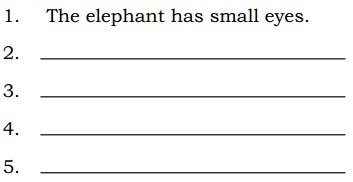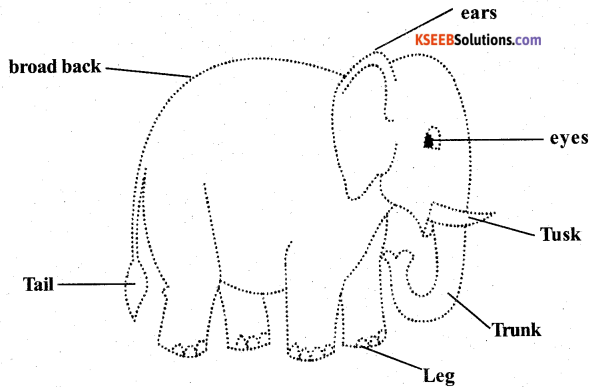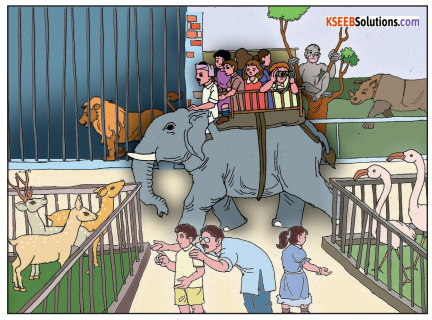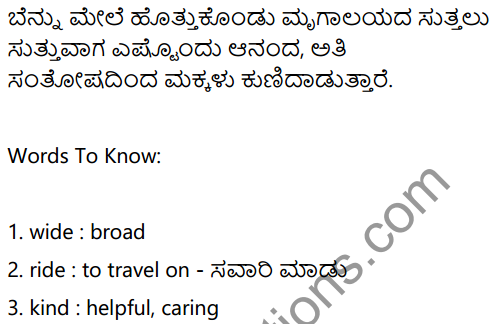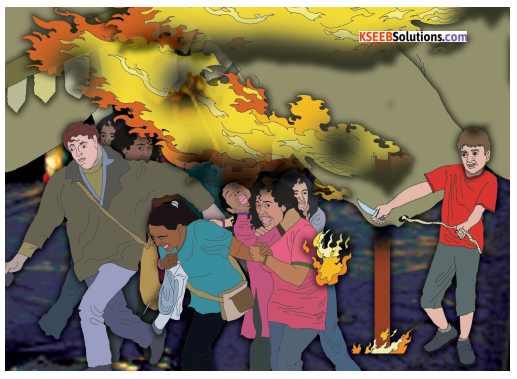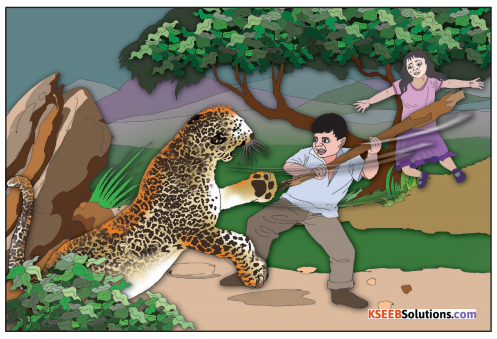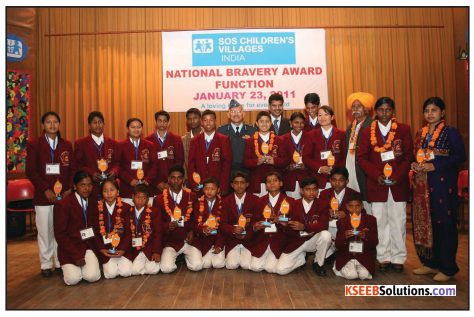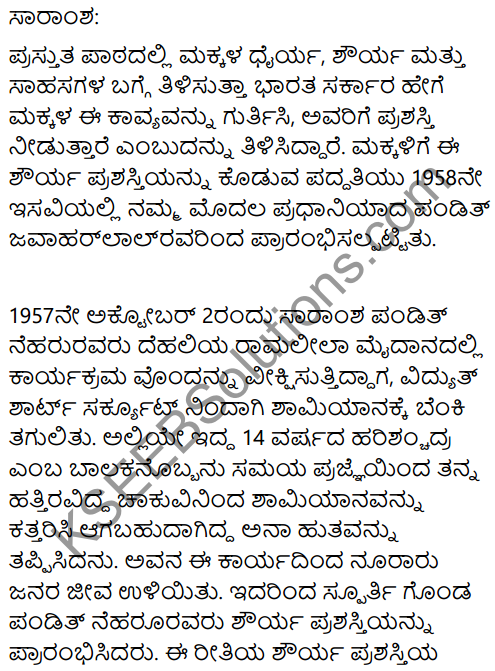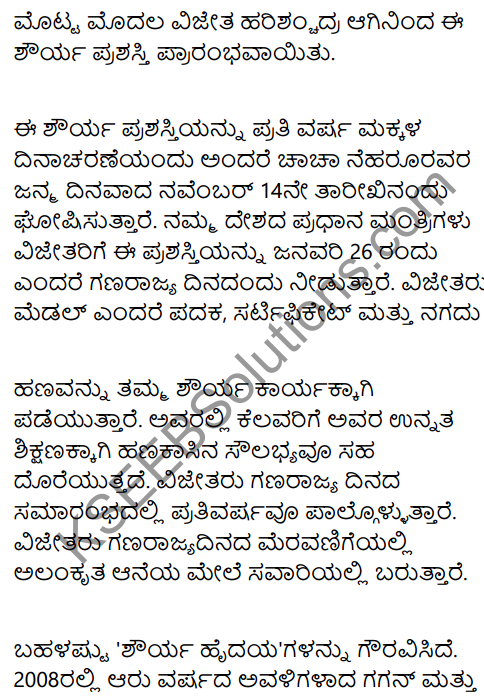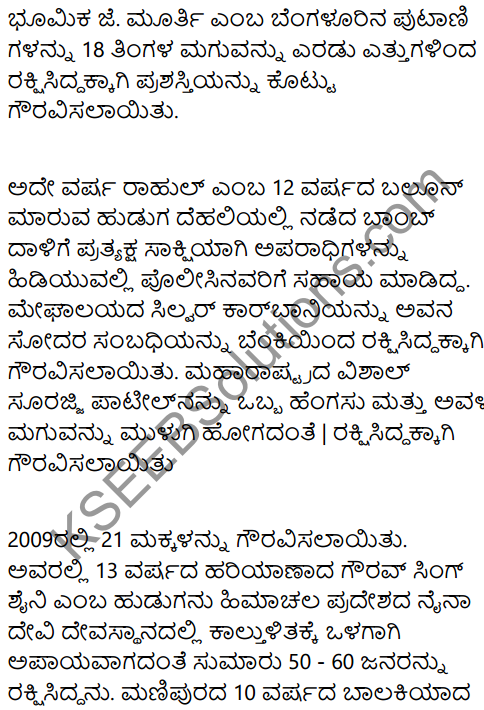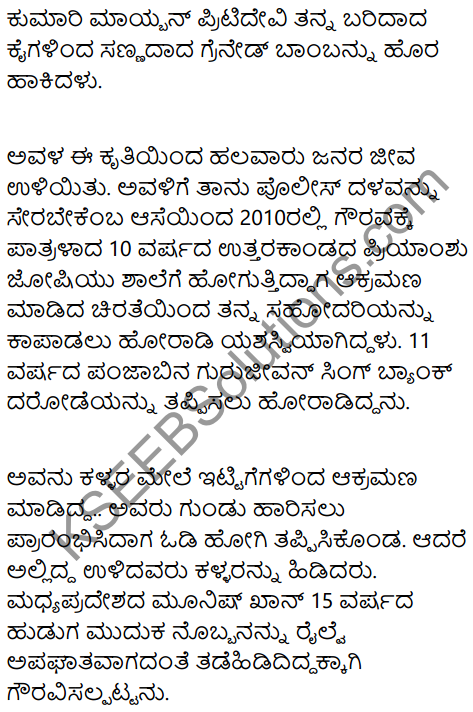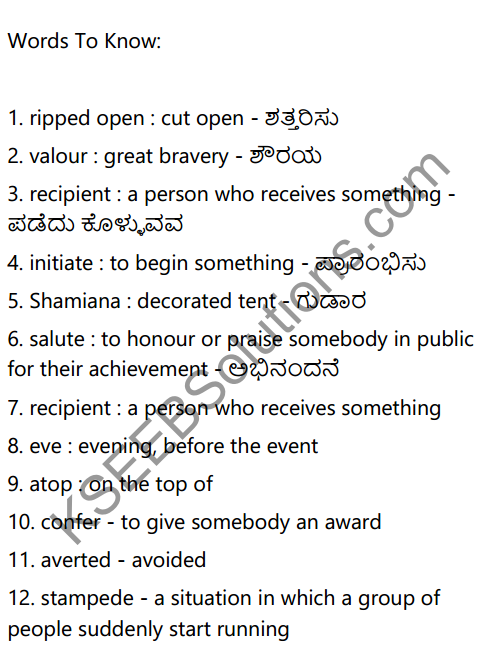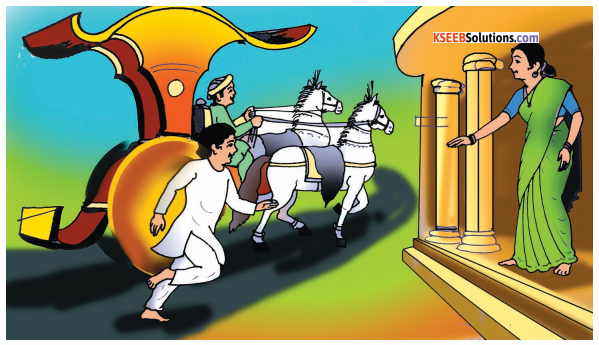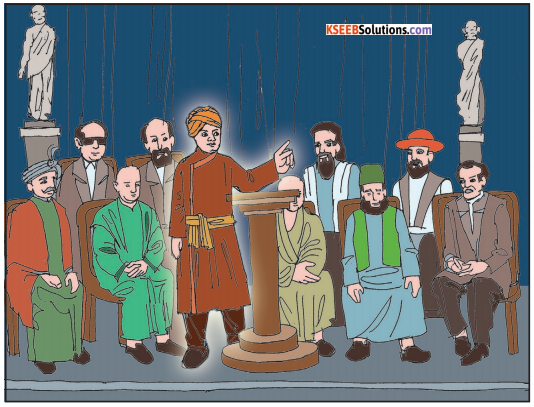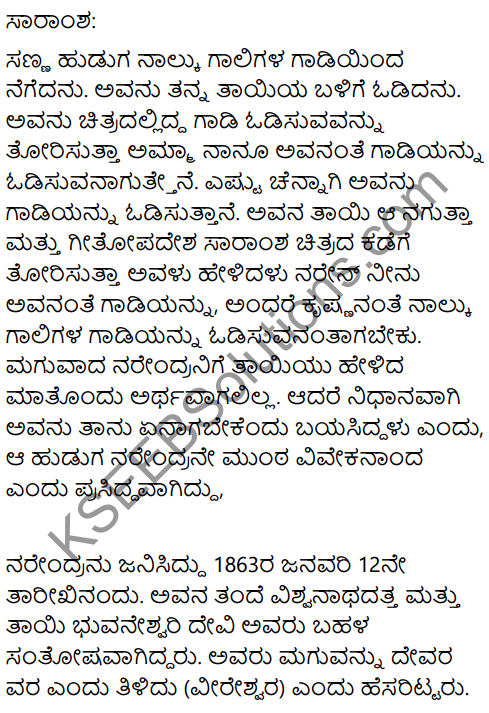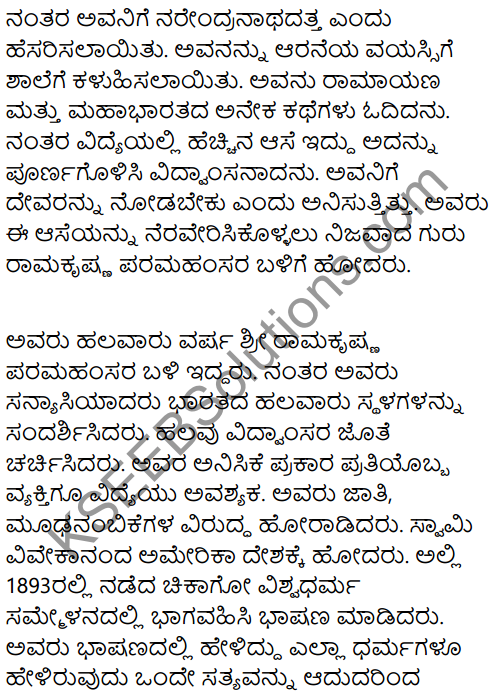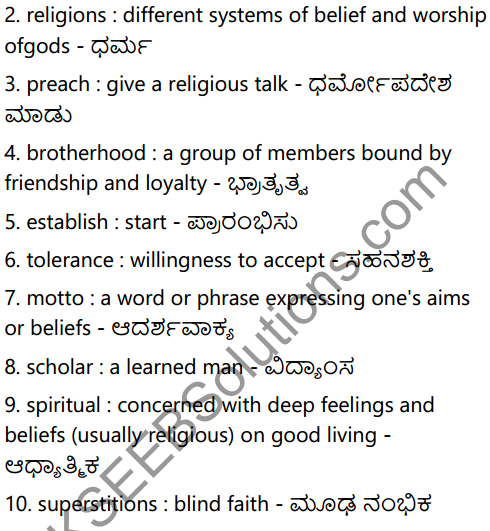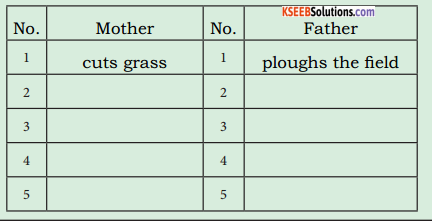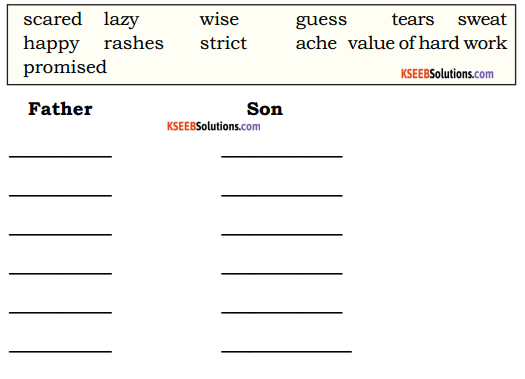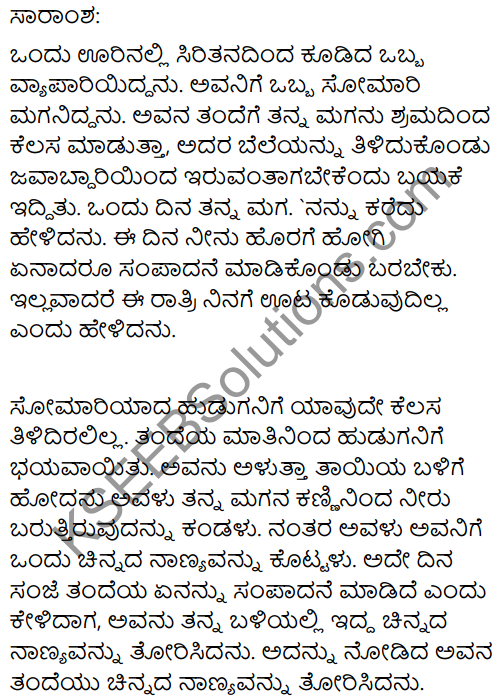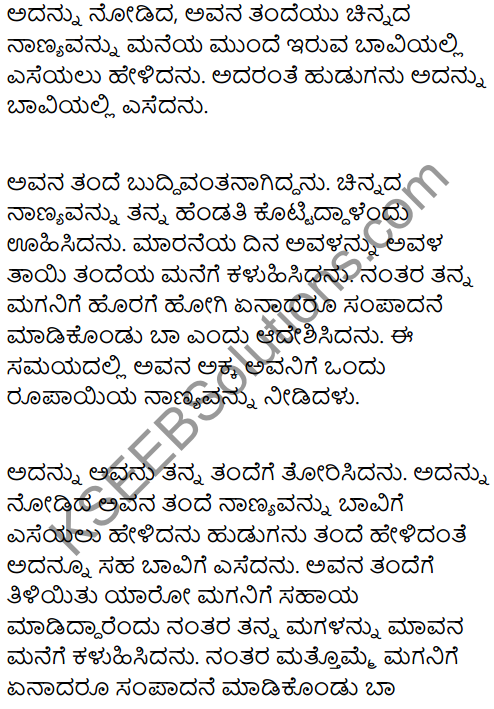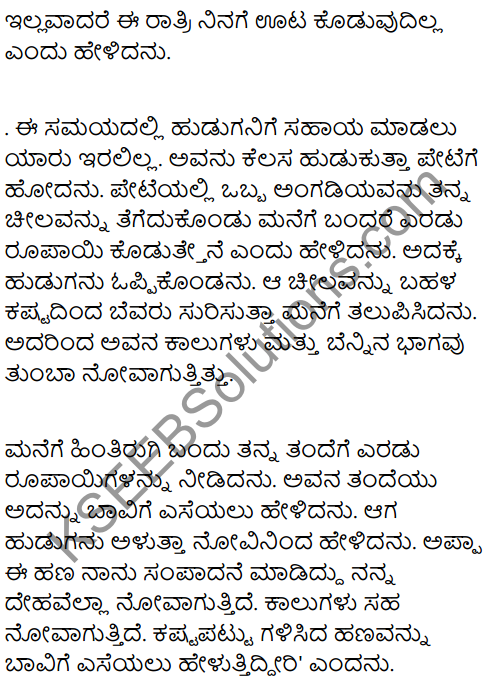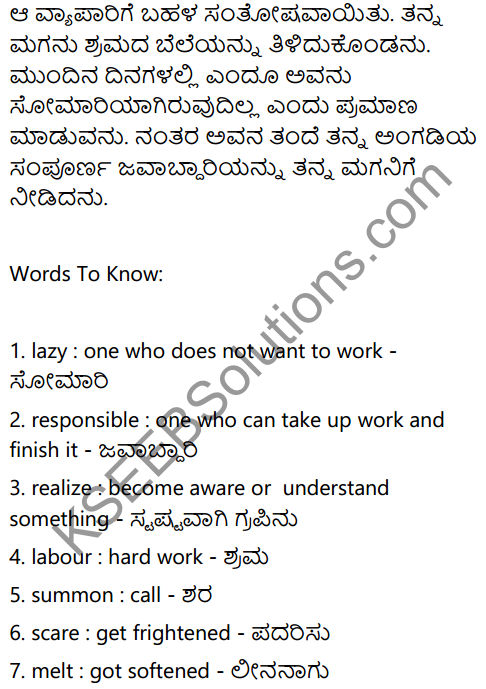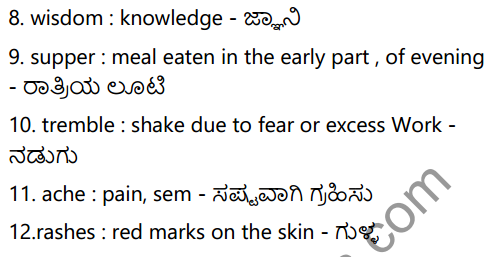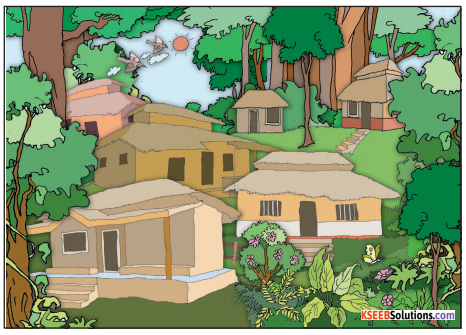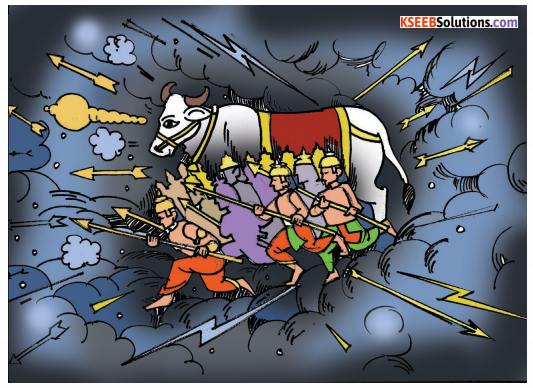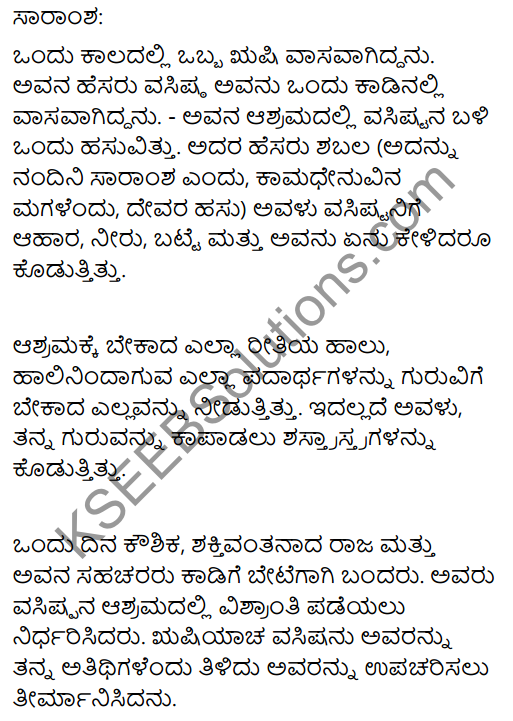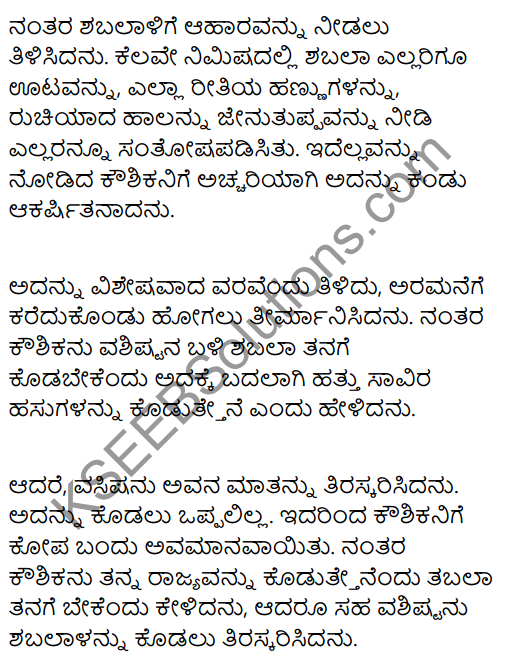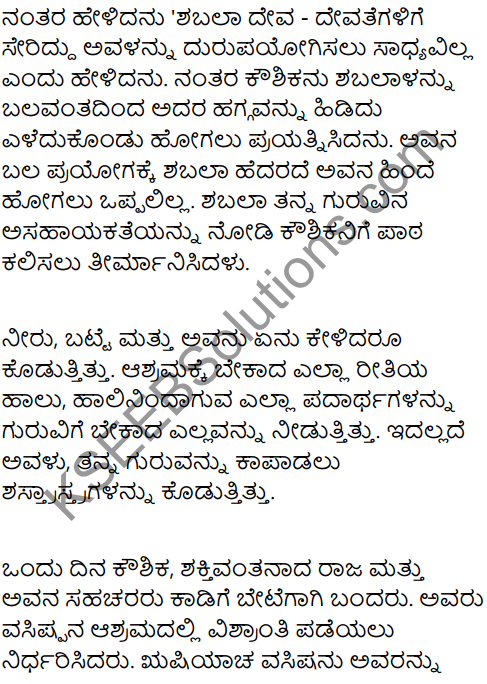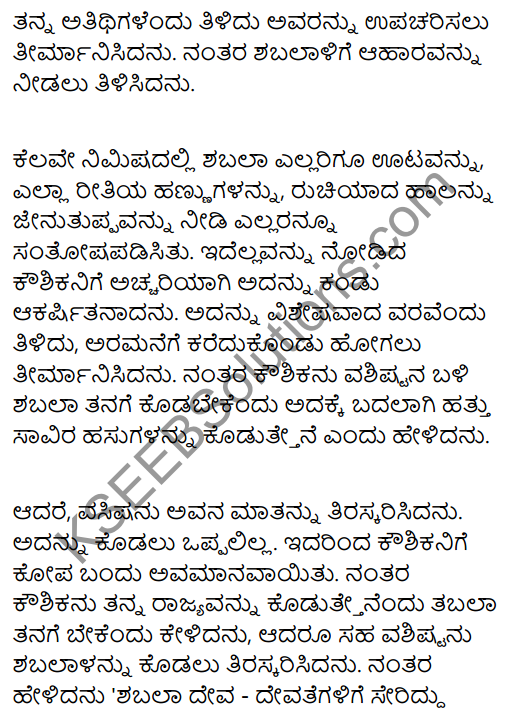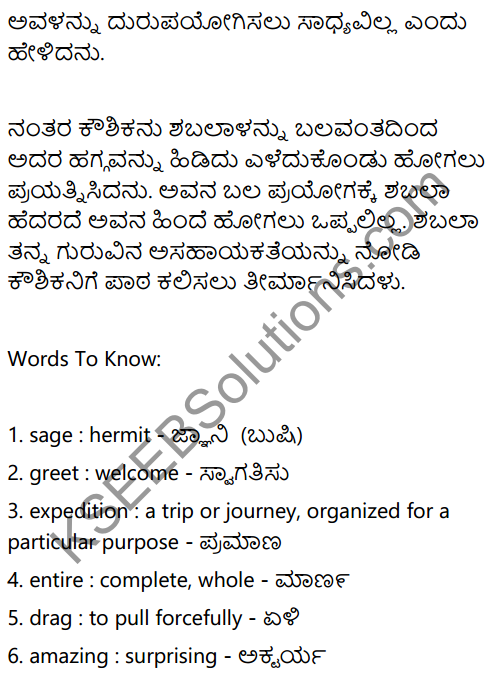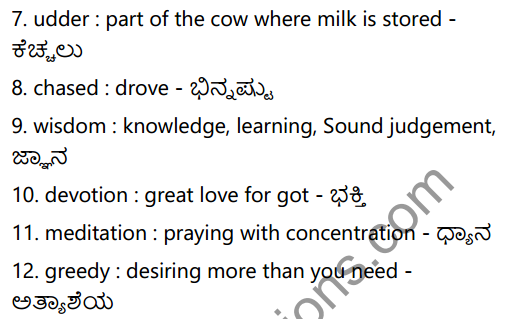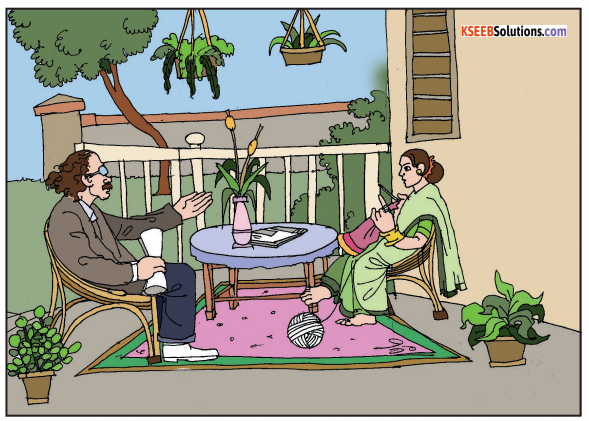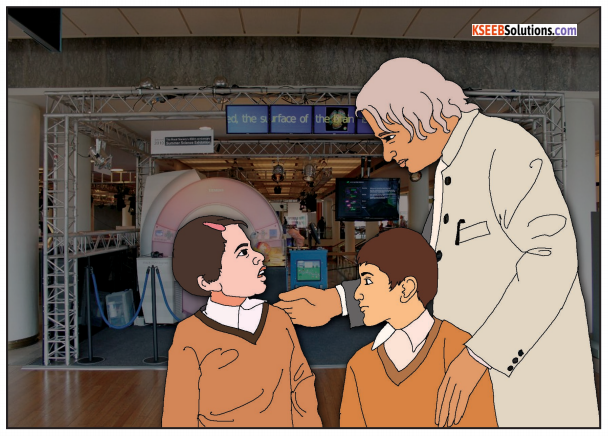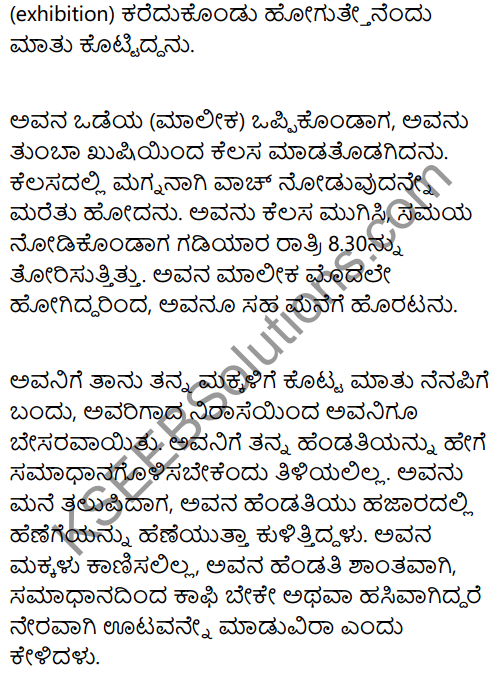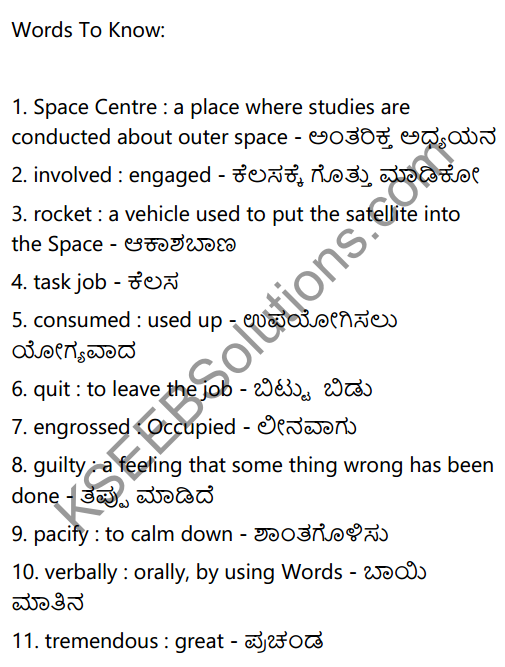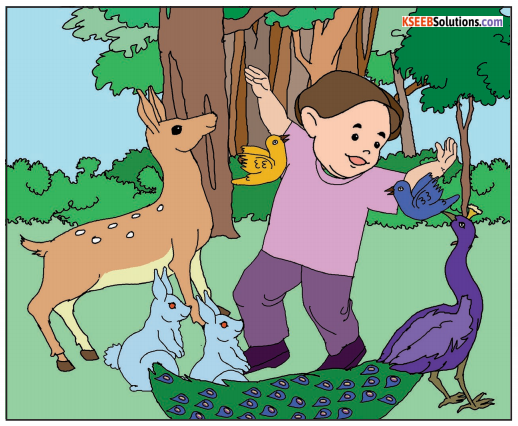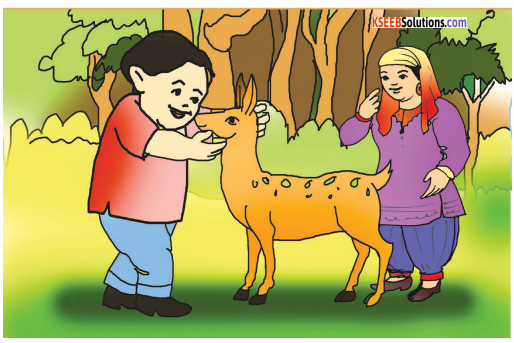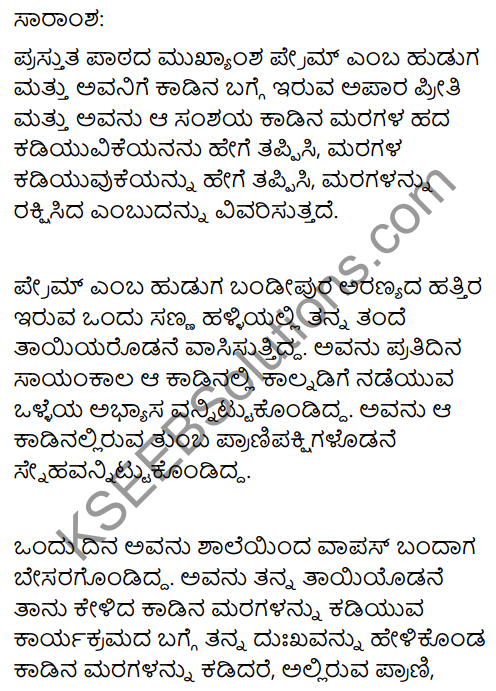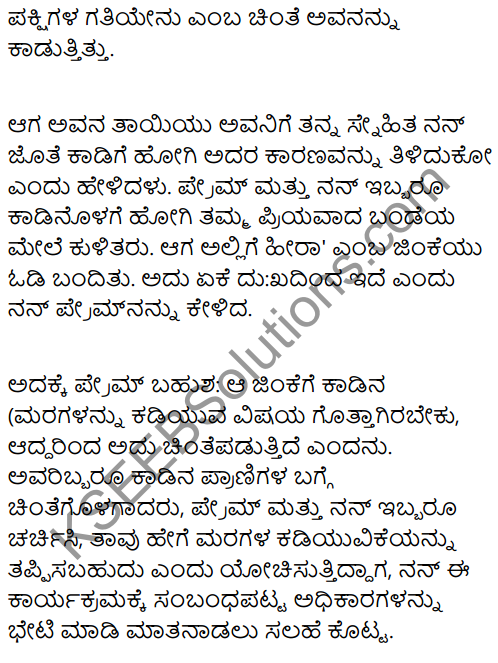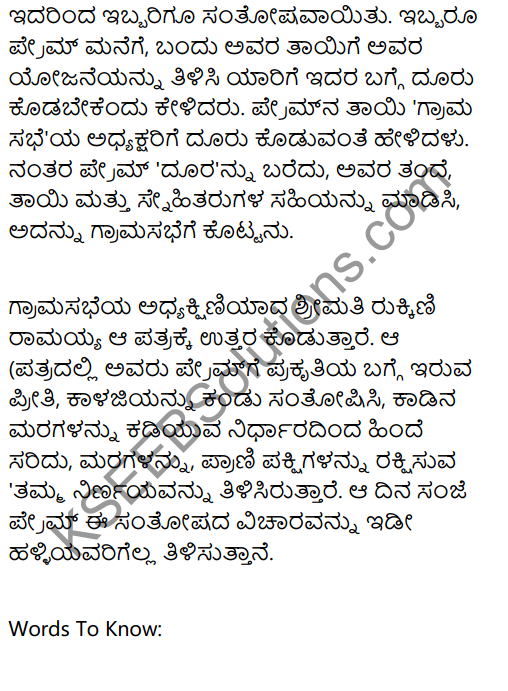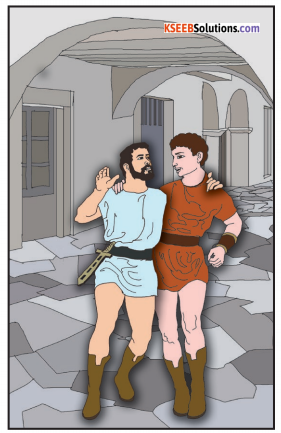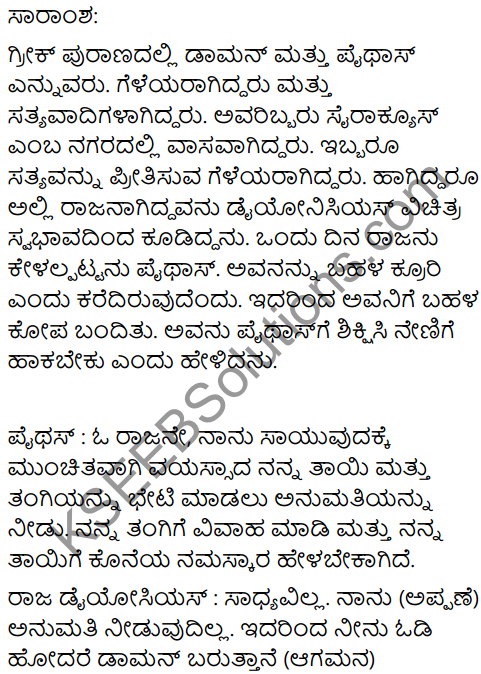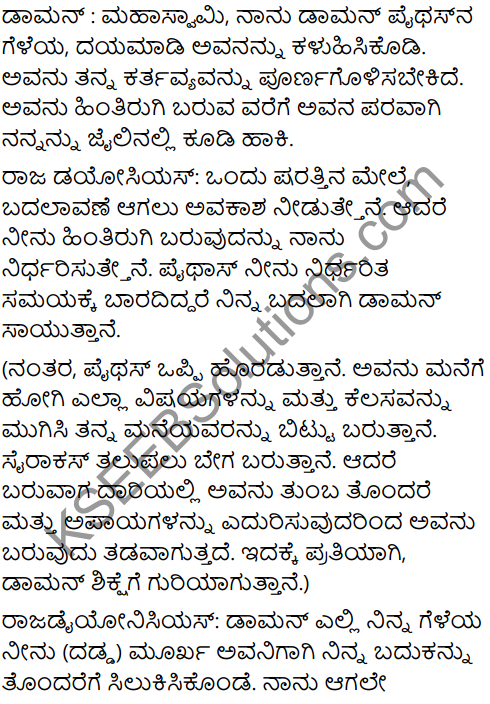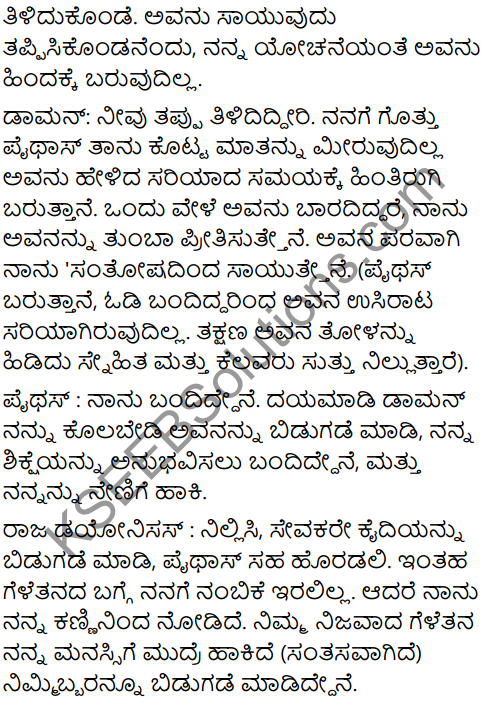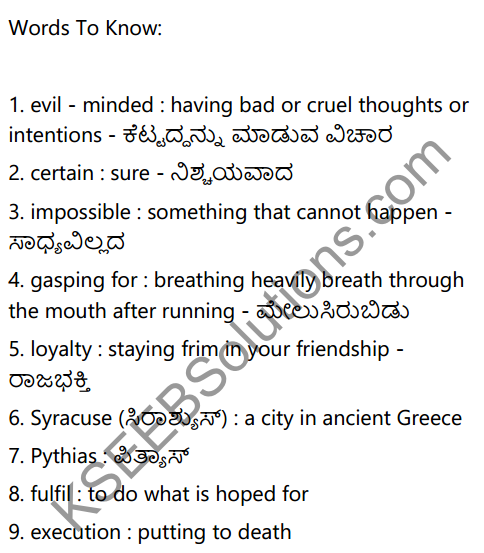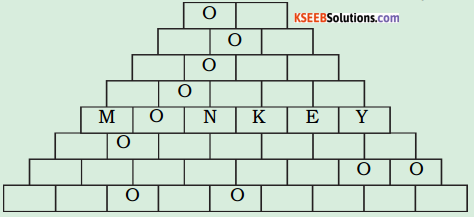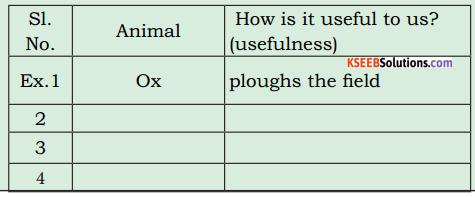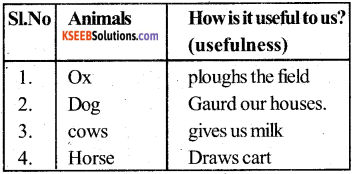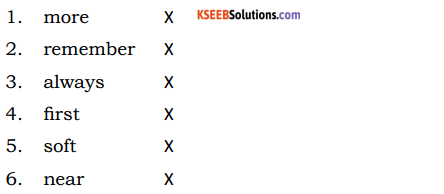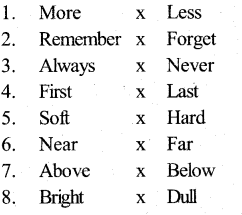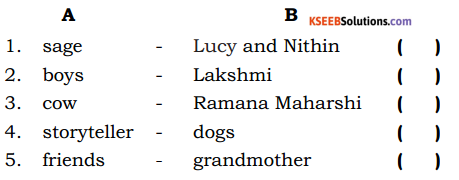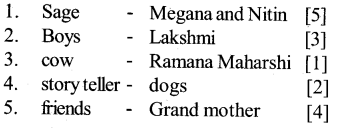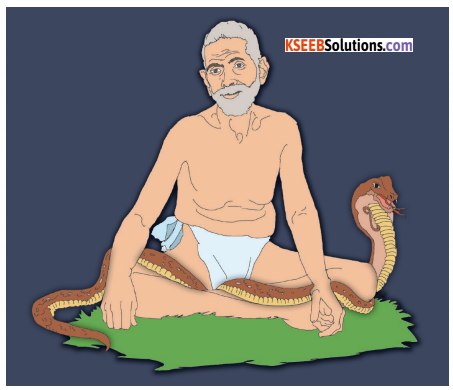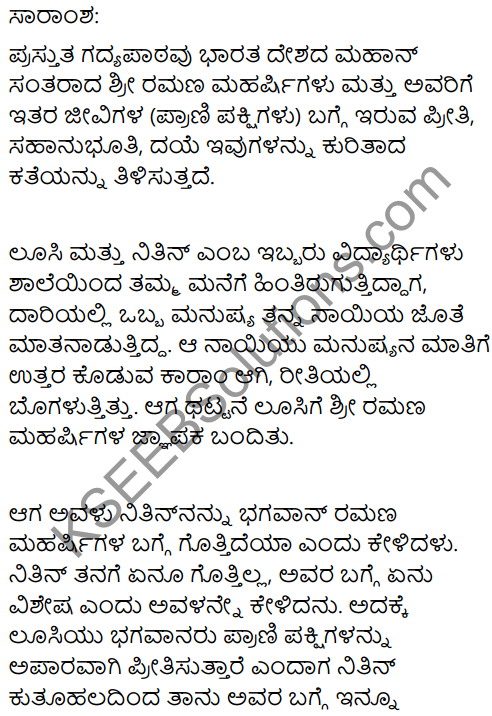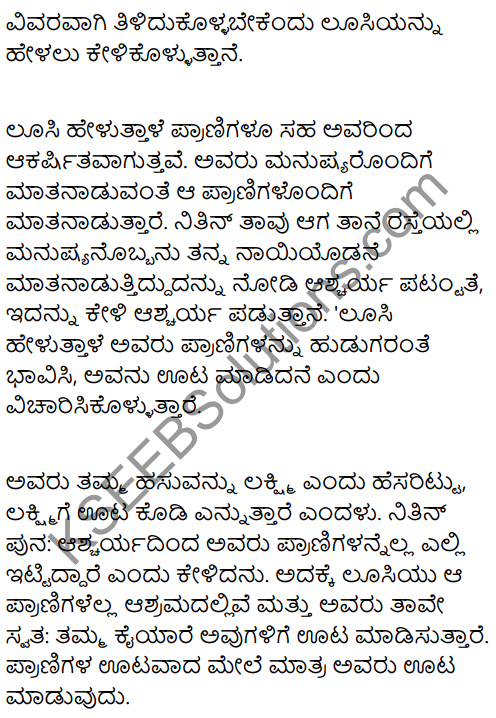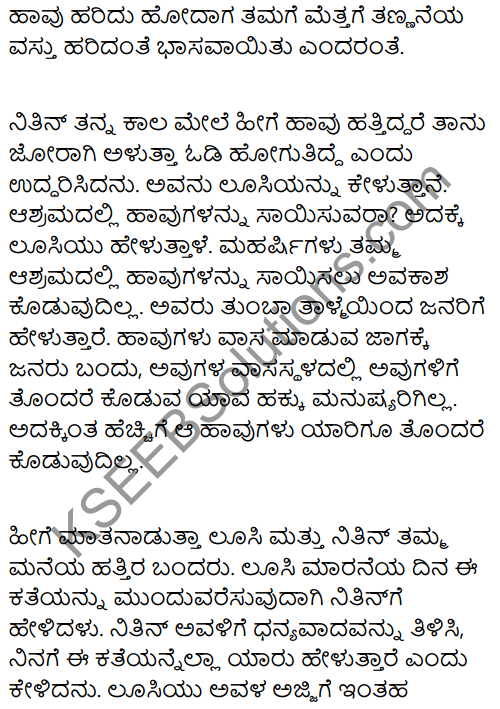Students can Download English Poem 2 Friends Questions and Answers, Summary, Notes Pdf, KSEEB Solutions for Class 5 English Karnataka State Board Solutions help you to revise complete Syllabus and score more marks in your examinations.
Karnataka State Board Class 5 English Poem Chapter 2 Friends
Friends Questions and Answers, Summary, Notes
Vocabulary:
I. Answer these questions:
Question 1.
What does the child like to do?
Answer:
The child likes to lie under a shady tree and see the sky.
Question 2.
Which rhyming word is there for‘lace’ in the second stanza?
Answer:
face
![]()
Question 3.
Why does the wind come to the child?
Answer:
The wind blows gently over the grass-land and conveys many good things. He is not able to see him but is able to feel his care.
Question 4.
Who are some of the gentle friends of the child in the poem?
Answer:
The sky, the sunshine, the wind
Question 5.
The poet compares the warm touch of sunshine on the face to the ____
Answer:
The kisses of the mother to her child before he goes to bed.
![]()
C2. Match the words from Column A with those from Column B:
| Column A | Column B |
| 1. Lie a little while | a. Whispers pretty things |
| 2. Sky | b. are near, but one can scarcely see them |
| 3. Sunshine flickers | c. and look up through the tree |
| 4. Wind | d. through the lace of leaves |
| 5. Gentle friends | e. is like a kind, big smile |
Answers:
1-c, 2-e, 3-d, 4-a, 5-b.
![]()
A1. Fill in the letters to complete the crossword puzzle. Use the pictures as clues.


Friends Additional Questions
Question 1.
Which stanza did you like in the poem? Write it down, then say it aloud.
Answer:
The Second stanza
The Sunshine flickers through the lace
of leaves above my head,
And kisses me upon the face Like Mother; before bed.
Question 2.
Write three or four things that you enjoy doing, either alone or with your friends.
Answer:
a. Walking along the river bank with friends
b. Climbing up the hill with friends.
c. Running in the grassland
d. Playing in the beach
e. Swimming in a big field well.
Question 3.
Can you name some more unseen friends?
Answer:
love, affection, fear, bhakti, happiness.
![]()
Friends Summary In English

The Poem ‘Friends’ is written by Abbie Farwell Brown. The poet writes about his friends in nature. The poet writes that it feels good to lie down under a tree for a little while and look up through the leaves on the tree. The poet feels that the sky appears like a kind big smile bent sweetly over him.
As he is lying under the tree the sun rays flicker through the leaves of the tree and kisses him on his face, just like his mother kisses him before putting him to bed. The poet, being a child, feels the wind blowing softly and gently over the grass and imagines that the wind whispers pretty things in his ears. Though the poet can’t see the wind he can feel the gentle caress of the wind.
The poet imagines that the sky, the wind, the sunshine, the tree are his friends. He cannot see many of his friends such as the wind etc., He feels that with such friends around, a child should never feel afraid, wherever he may be. The natural friends of the poet give him a kind of security and he feels safe.
![]()
Friends Summary In Kannada
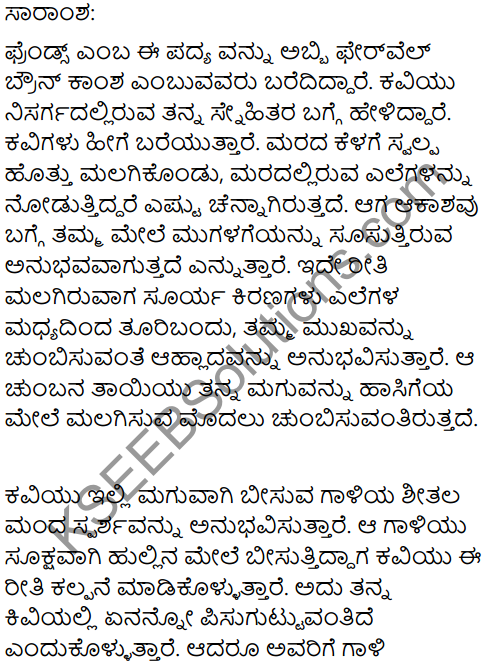
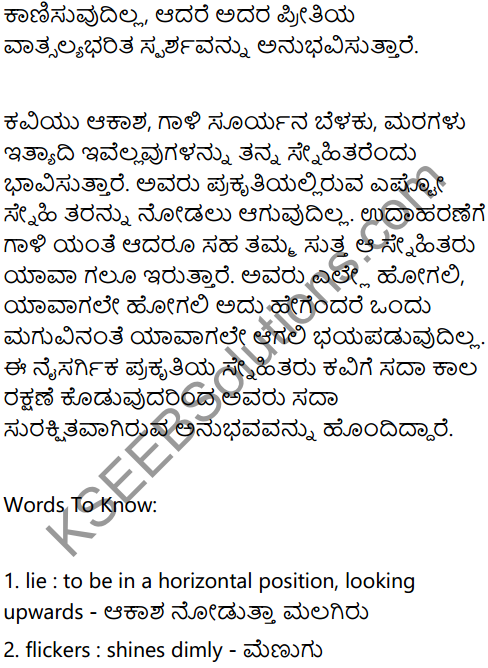

![]()

